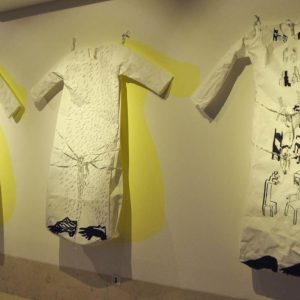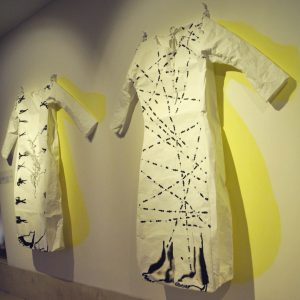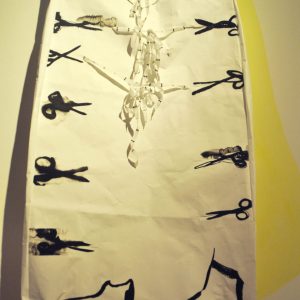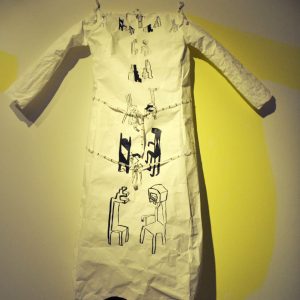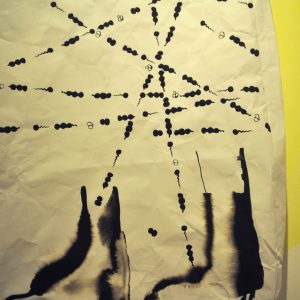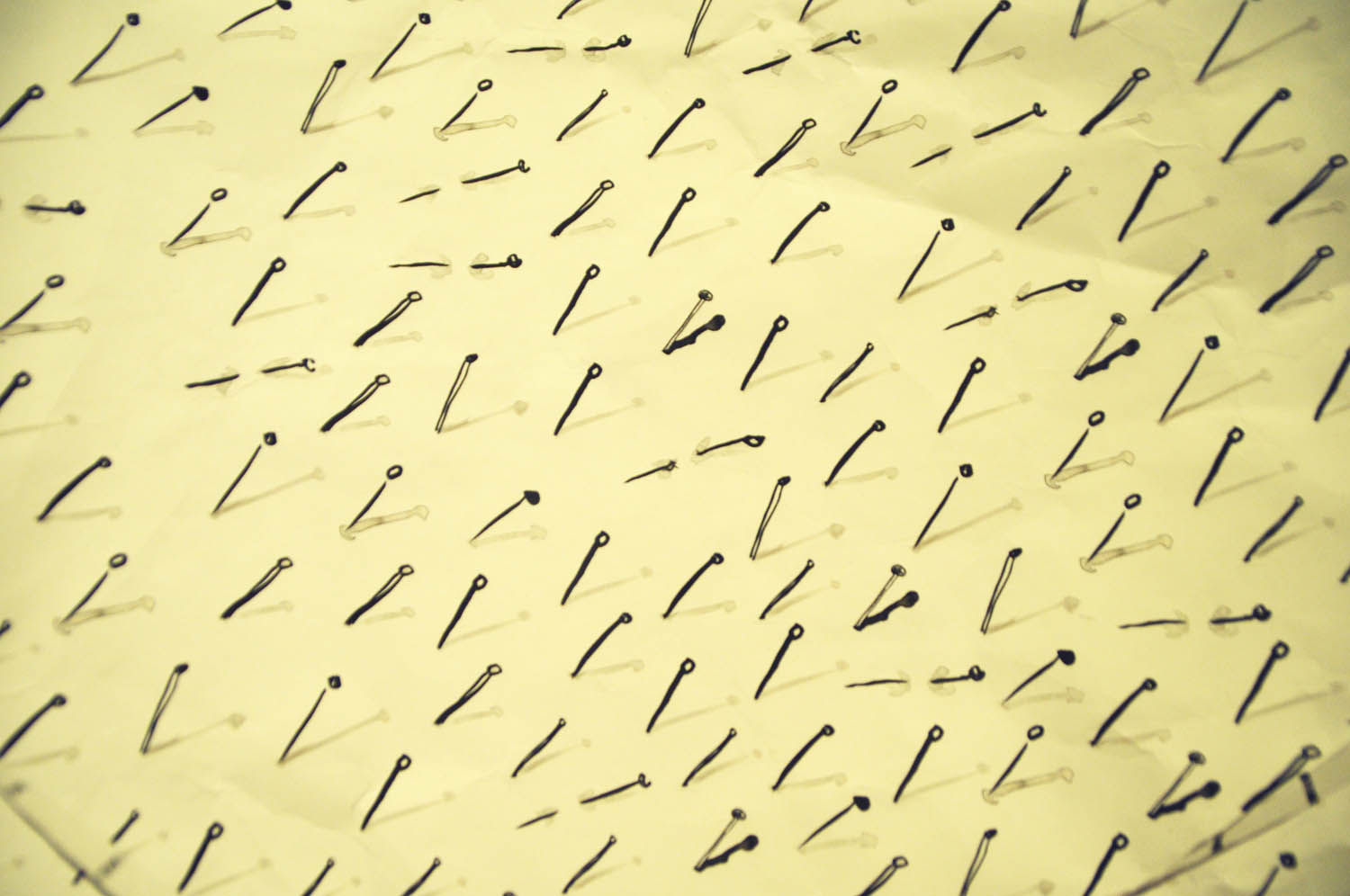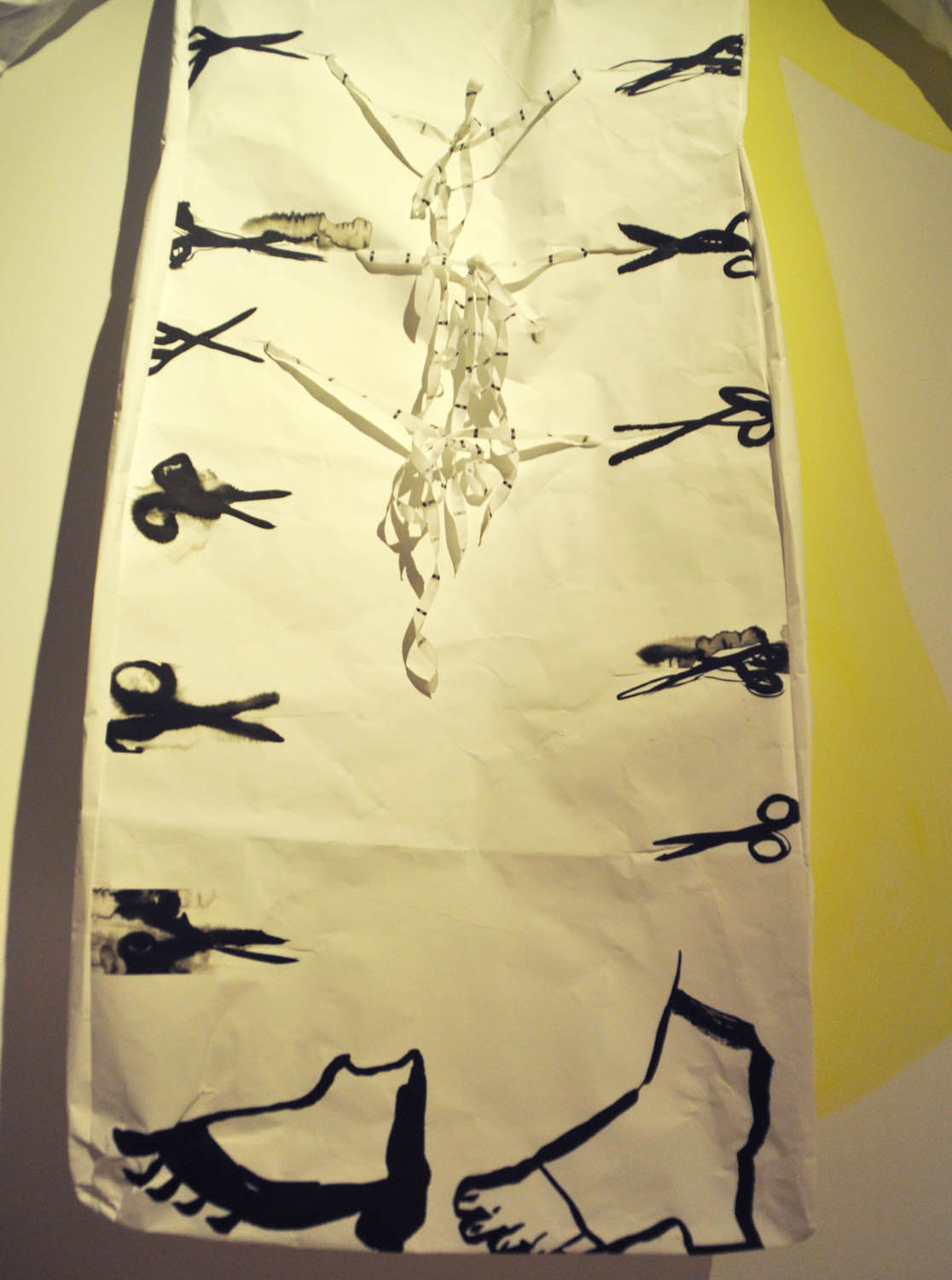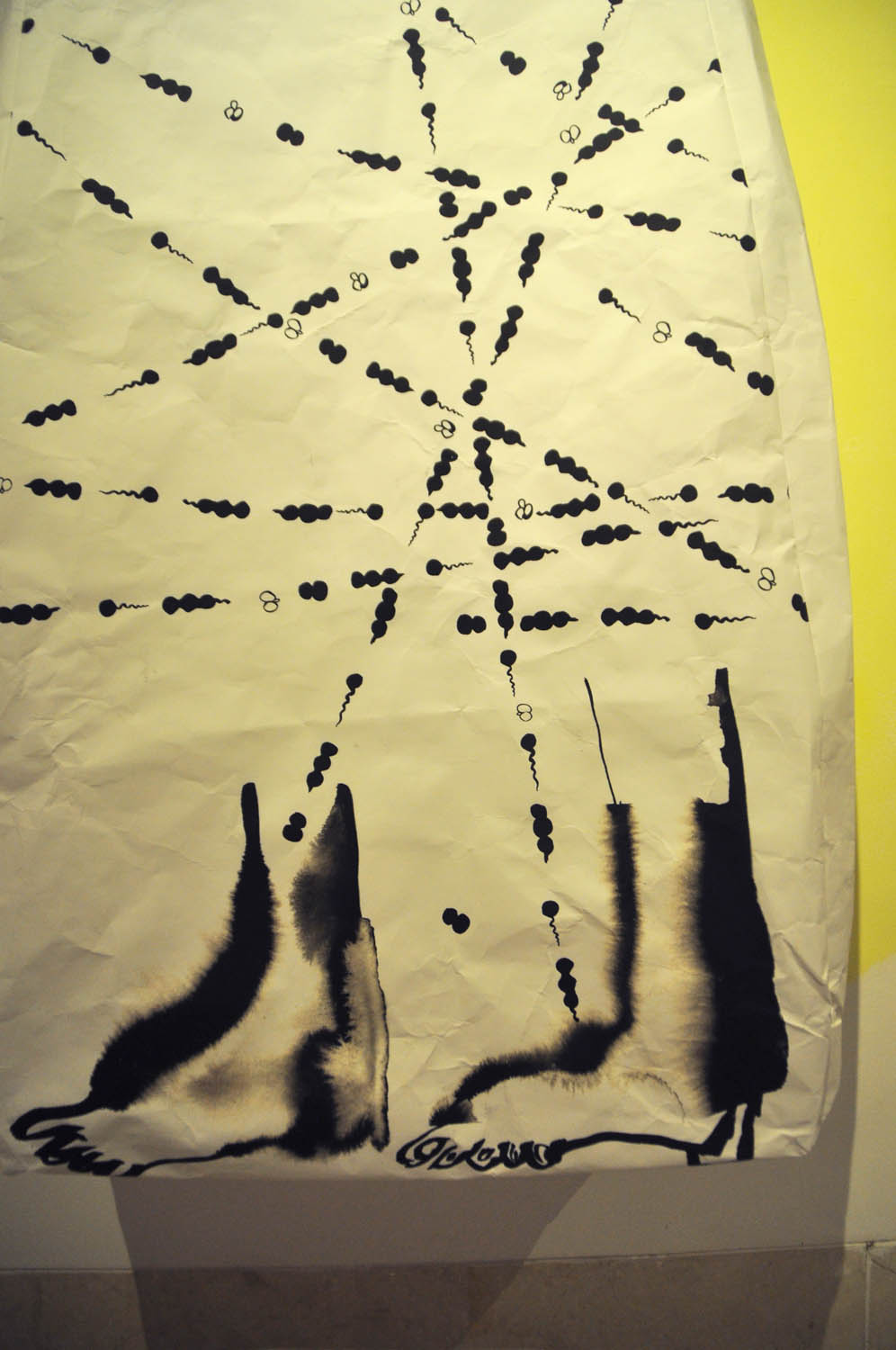‘Besar’ consists of four costumes related to Death. Death creates an awareness of our mortal state and is therefore key to our understanding of the phenomenon of life. Our life is continuously weighed against our approaching death. Our experiences and stages in life are non-reversible, bringing with it a specific consciousness of time.
Time itself has an elusive character. We seek to understand life through the time machine that is created by our biological rhythms. Death and the afterlife are often imagined through art, tradition and religious expression. I find that in the world of design, the importance of Death is often forgotten.
These costumes may be worn by those that have passed away, before their bodies are cremated or buried. The costumes can fulfill different purposes; they can give comfort to the bereaved but also, by having space for personal objects, illuminate the identity of the deceased.
Death is often associated or symbolized as the vertical, in the relation to the spiritual, while Life on earth is depicted as the horizontal. If we think about the physical body itself then it is actually the opposite. Vertical is “life” or “standing”, while Death is “horizontal” or “laying”.
